Belly piercings, also known as navel piercings, have been one of the most popular body piercings since the early 2000s, and for good reason! A belly piercing is a stylish way to highlight your midriff with beautiful jewellery, and it’s also a symbol of body positivity, self-expression, and self-love.
Belly piercings are classified as surface-to-surface piercings, where the jewellery passes through the skin above or below the navel, rather than the belly button itself. The term ‘belly piercing’ simply refers to its placement near the navel. At Essential Beauty & Piercing, we’ve been piercing since 1995 and are Australia’s specialists in all body piercings, including belly piercings. In this guide, we’ll cover everything you need to know from belly piercing placements and anatomy to the piercing procedure, healing, aftercare, jewellery options, and managing common concerns like migration
Do I Have the Right Anatomy for a Belly Piercing?
You don’t need to have a flat stomach to get one. Belly piercings are suitable for a wide range of body shapes and sizes.
At your consultation, our expert piercers will assess your anatomy to ensure a belly piercing is in the best position for your individual anatomy. Sometimes, your jewellery may need to be placed further away from your belly button, For example, clients with a deeper belly button may need to consider this option to avoid jewellery rubbing, moisture build-up, or irritation.

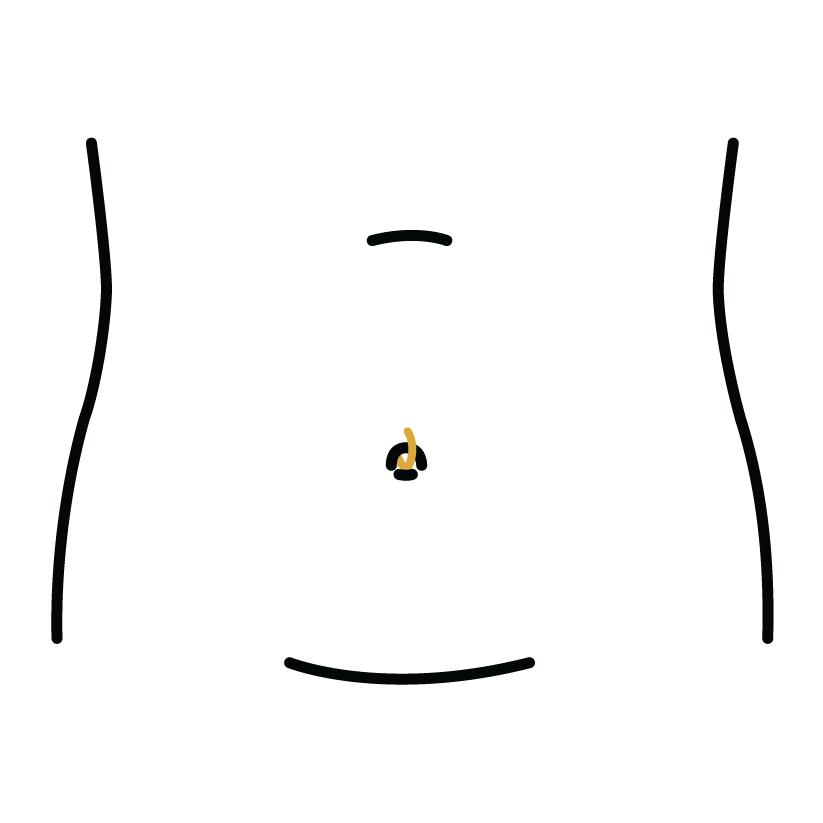
Why anatomy matters in belly piercings
If you have a deep-set belly button, your piercer may recommend positioning the jewellery slightly higher rather than directly at the edge of your navel. This is because piercing too close to the belly button can create issues during the healing process, such as:
- Jewellery angle – The jewellery may sit angled downward instead of facing straight and upright, making it less comfortable and harder to heal. Downwards facing jewellery means that you will only see the very top ball of a barbell. Our barbells are beautiful, and the gems are worth showing off by having the position of the barbell straight and facing forward so you can see both top and bottom ball.
- Prolonged healing time – The lower belly skin can press or rub against the piercing, delaying recovery.
- Moisture build-up – Skin folds around a deep navel can trap sweat and moisture, creating the perfect environment for bacteria.
- Risk of rejection – Constant friction and knocking of the jewellery can trigger the body’s immune system to push the piercing out (migration or rejection).
Your piercer will always explain all your home care and options on the day of your appointment, they will show you the placement in a mirror and even show you how your jewellery will move around as you move your body.
The marking for the position of your jewellery is made when you are in a natural standing position so that you get the best placement for your particular anatomy.
We want you to have the best placement that will enable you to show off your new piercing and sparkly jewellery, and you can make a fully informed decision about your piercing placement.
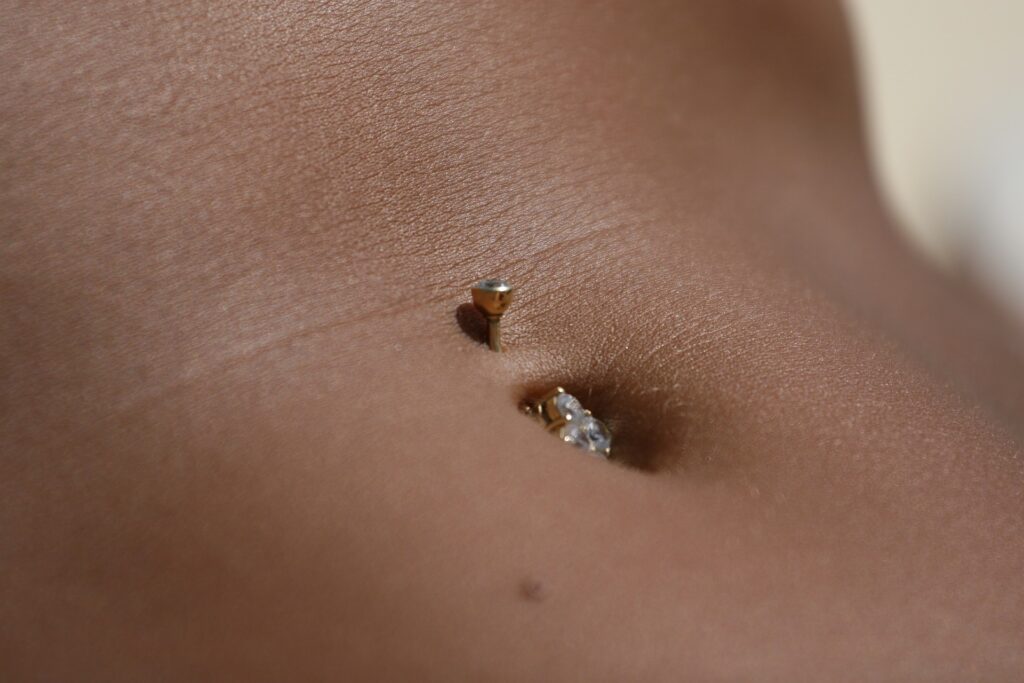
Belly Piercing Placement
Belly piercings are considered surface-to-surface piercings, meaning the needle passes through the skin above or below the navel, not the belly button itself.
- Top Belly Piercing (most common): The jewellery sits through the fleshy skin just above the belly button, allowing the ball of the belly bar to hang naturally over the navel.
- Bottom Belly Piercing (not common): The jewellery is positioned in the fleshy skin on the bottom region of the belly button. Usually, the larger ball of the barbell is turned upwards to sit in the belly. Which is opposite to the way a belly bar sits when piercing is done from the top.
- Innie vs Outie Belly Buttons: While innies are most common, outies can still be pierced beautifully depending on the shape and depth of the belly button.
It’s normal for your piercing to look slightly different when you’re sitting, standing, or lying down. Your piercer will always mark the placement while you are standing relaxed, since that’s how the piercing will be most visible.
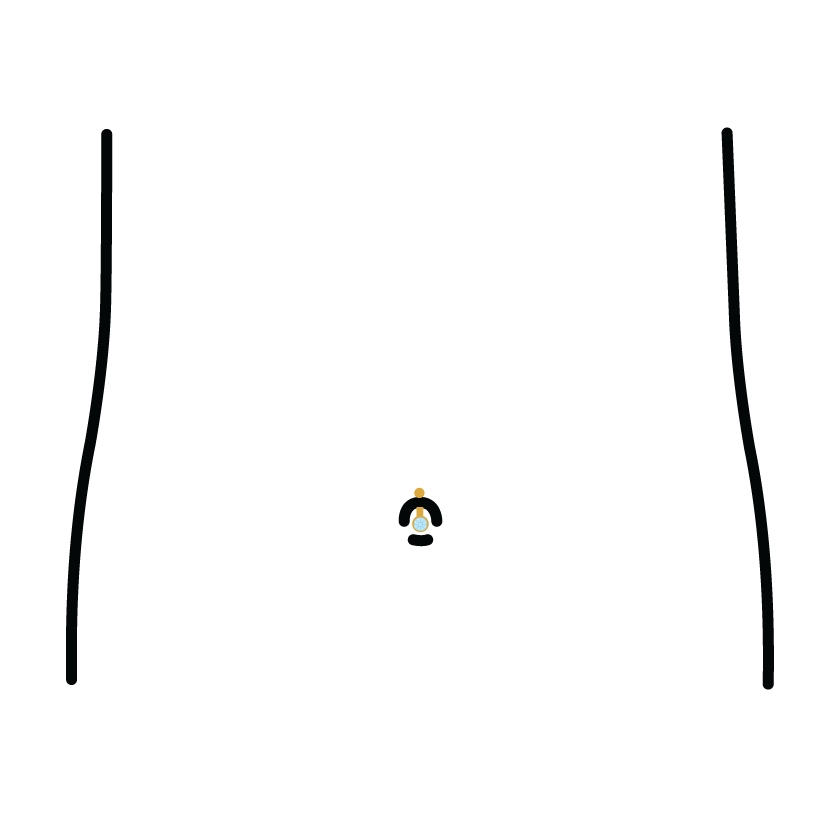
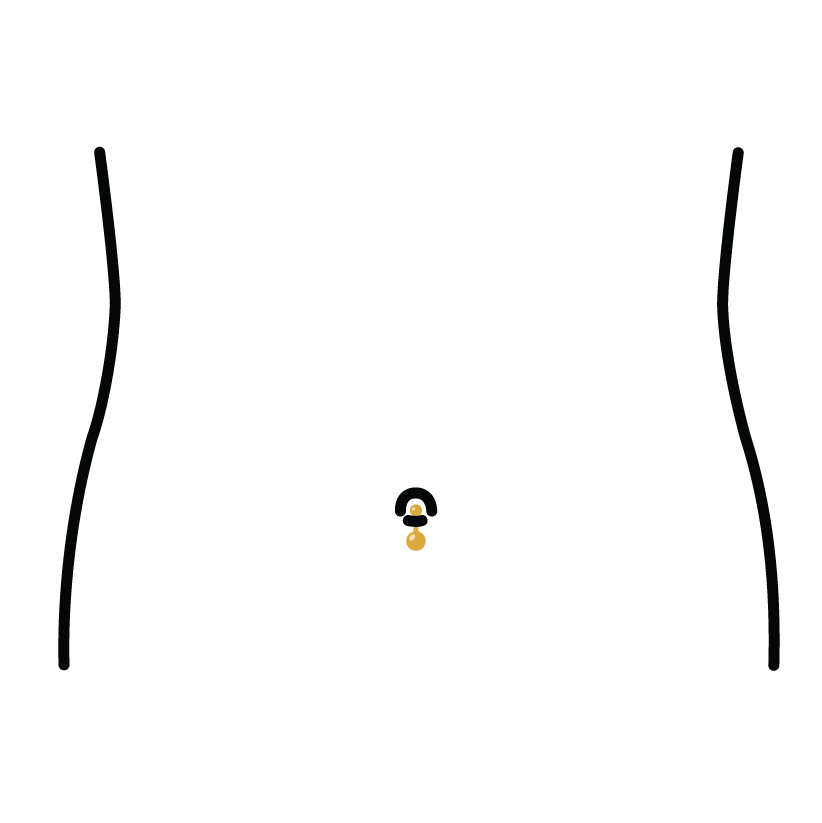
Jewellery Options for Belly Piercings
We stock a huge range of jewellery to customise your look:
- Belly Bars: The classic and most comfortable option. These are curved and have a variety of attachments above and below the bar.
- Belly Rings / Clickers: Flat-set oval rings for a unique, modern look.
- Materials: All belly piercings come with the choice of two options, surgical steel and gold PVD surgical steel belly bars. However, you can upgrade to, titanium, 24K PVD gold, rose gold, black PVD, solid 18K gold, cobalt chrome, and Bioplast to choose what is best suited to your style.
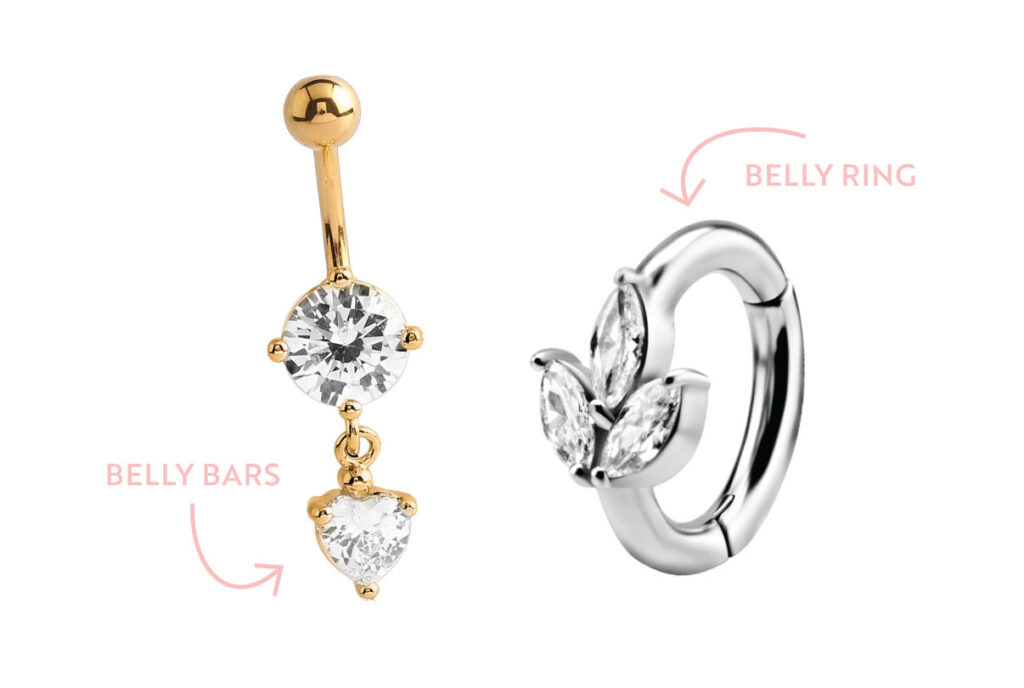
The Belly Piercing Procedure
Here’s what to expect during your belly piercing appointment at Essential Beauty:
- Consent & ID: You’ll complete a digital consent form and show valid ID.
- Jewellery Selection: Choose from basic jewellery included in the price, or upgrade to gorgeous designs like double gem belly bars, oval belly rings, or crystal styles.
- Marking the Placement: Your navel is cleaned with isopropyl alcohol, then your piercer marks the entry and exit points. You’ll stand in front of a mirror to approve the placement.
- The Piercing: A sterile clamp is applied, and a single-use needle pierces the skin. A 14-gauge autoclaved barbell is inserted immediately.
- Aftercare Advice: Expect slight redness, swelling, or bleeding – this is completely normal and subsides quickly with proper care.
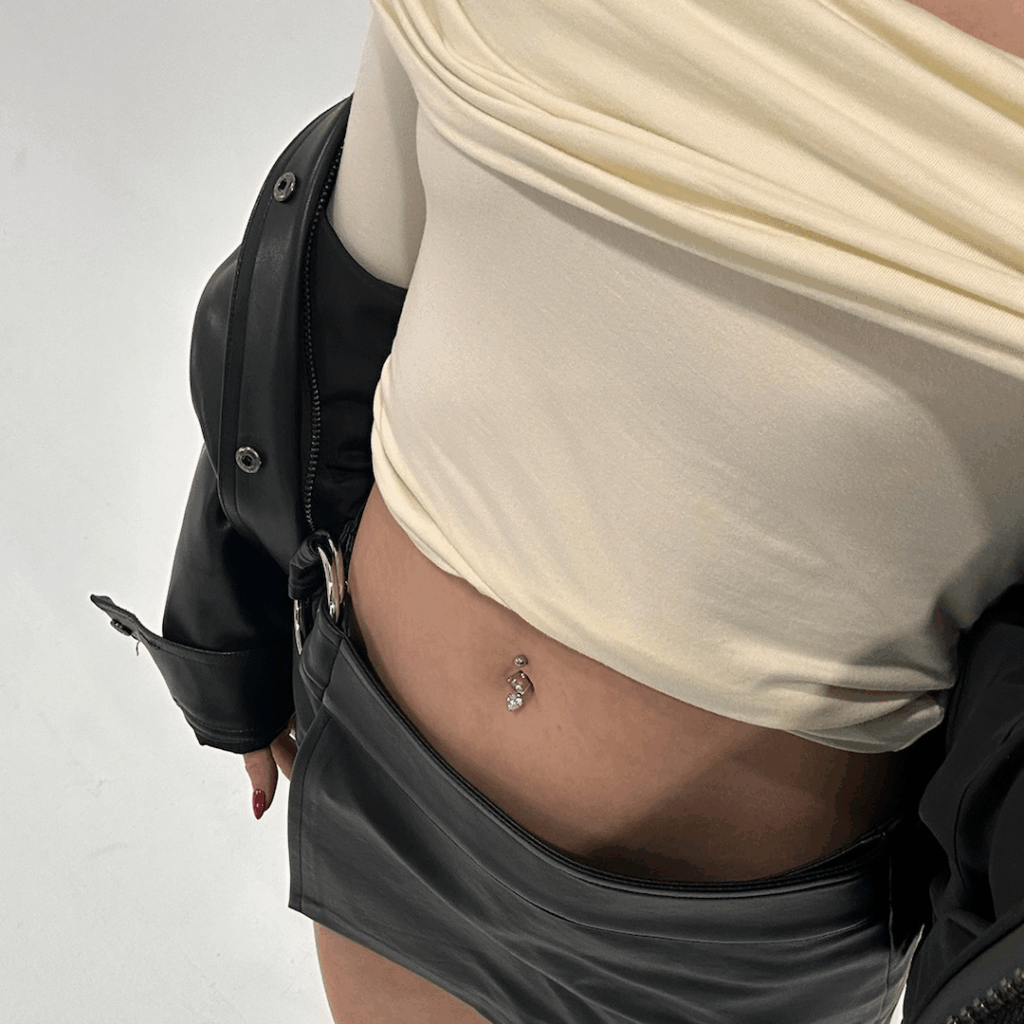
Does a Belly Piercing Hurt?
Pain is minimal compared to cartilage piercings, as the stomach area is soft and fleshy. Most clients describe the sensation as a quick pinch. Any tenderness usually settles within days if aftercare is followed correctly.
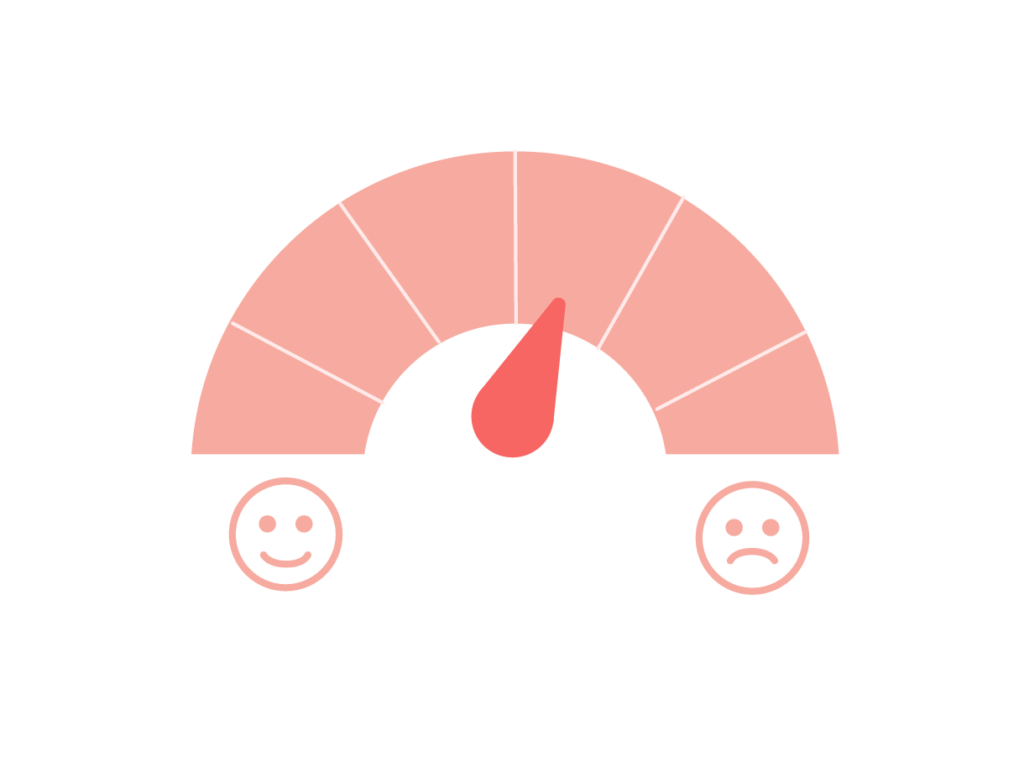
Healing Time & Aftercare
Belly piercings can take 12–24 months (or longer) to fully heal. Healing depends on your general health, lifestyle, and how closely you follow aftercare.
- Weeks 1-2 clean twice daily with Sterilear Step-1 Piercing Spray.
- Weeks 3 and onwards Clean twice daily with Sterilear Step-2 Piercing Spray.
- Avoid sleeping on your piercing.
- Do not touch, twist, or knock your jewellery.
- Avoid tight clothing that may rub.
- Treat piercing bumps with Calm Piercing Bump Treatment Dots.
Remember, piercings heal from the outside in. Even if it looks healed on the surface, the inside may still be tender for months.

Downsizing & Jewellery Changes
Once healing progresses, you’ll need to downsize your jewellery. Long bars can catch on clothing and increase the risk of migration. A piercer can help assess when it’s safe to change – usually around the 12-20-week mark for a shorter bar, with full jewellery freedom after complete healing.
Signs you may be ready to downsize:
- No redness or discharge.
- No pain around the piercing site.
- At least 12-20 weeks (3-6 months) have passed.
We always recommend coming back to the salon for your first changeover so your piercer can check healing and insert the jewellery for you.
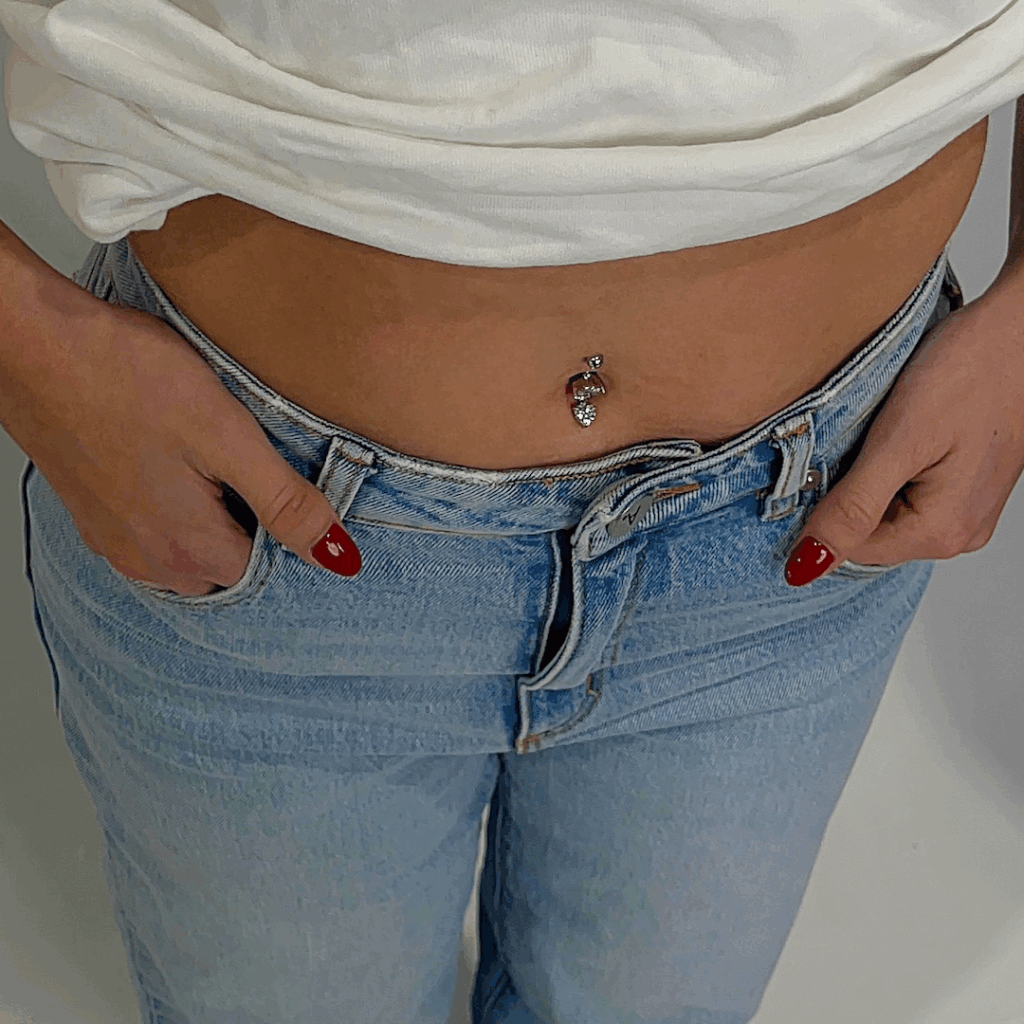
Migration & Rejection
Because belly piercings are surface piercings, migration (when the jewellery moves closer to the skin’s surface) is a natural risk. Factors that may contribute include:
- Wearing long jewellery for too long.
- Friction from clothing or belts.
- Sleeping on your piercing.
- Poor posture causing skin folds to press against the piercing.
- Trauma from knocking, pulling, or over-cleaning.
If you notice jewellery moving, shrinking, or rejecting, visit your local Essential Beauty salon for assessment.
Ready to Get Your Belly Pierced?
A belly piercing is a fun, stylish, and confidence-boosting choice – whether you want a subtle sparkle or a bold statement piece. At Essential Beauty, our Piercing Experts are here to guide you through every step, from consultation and placement to aftercare and jewellery upgrades.
Book your belly piercing online today or visit your local Essential Beauty salon to start your piercing journey!
